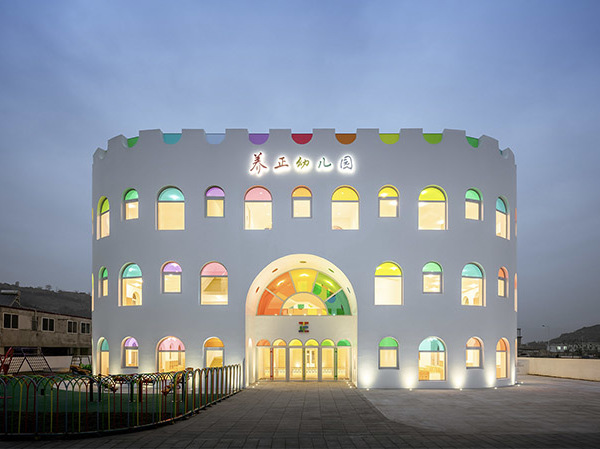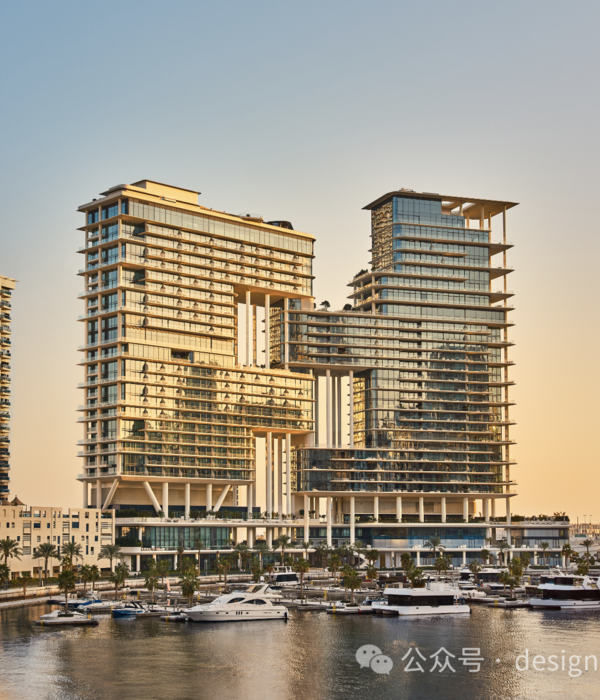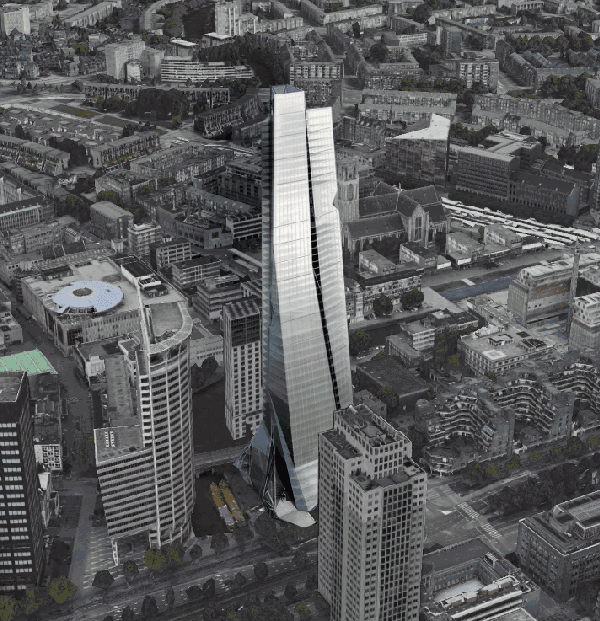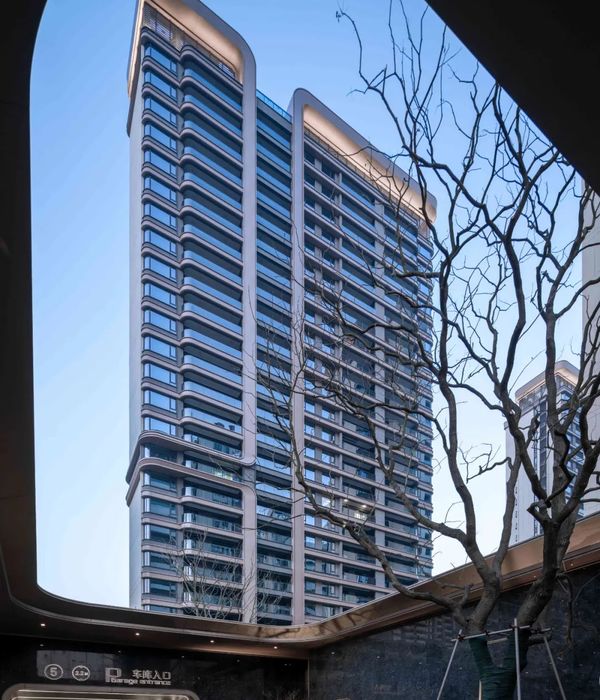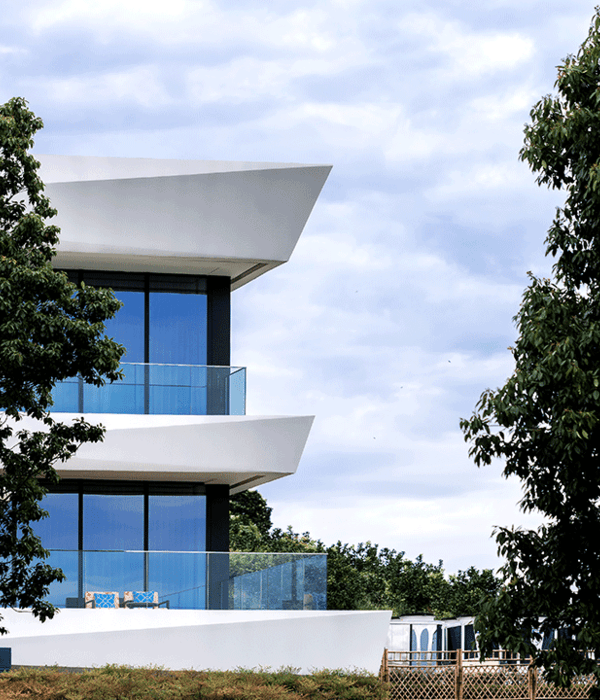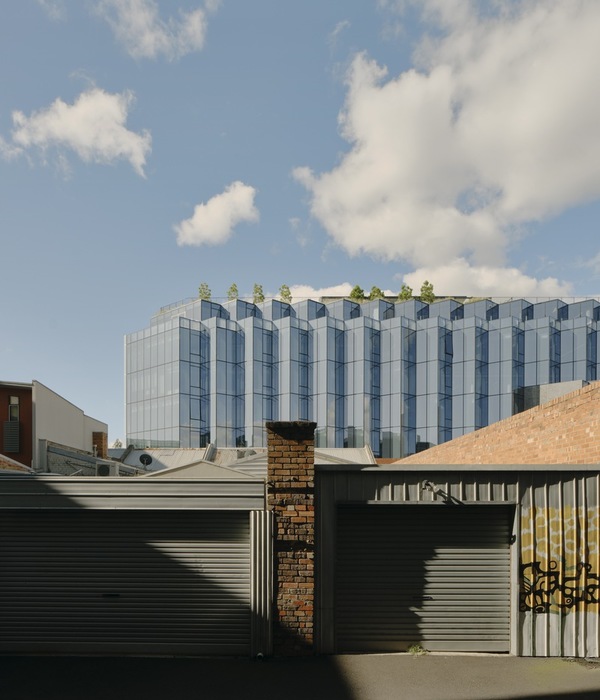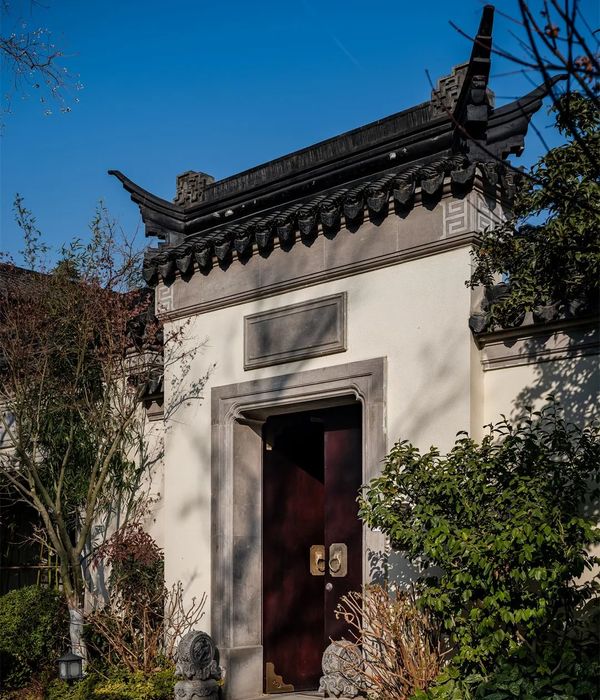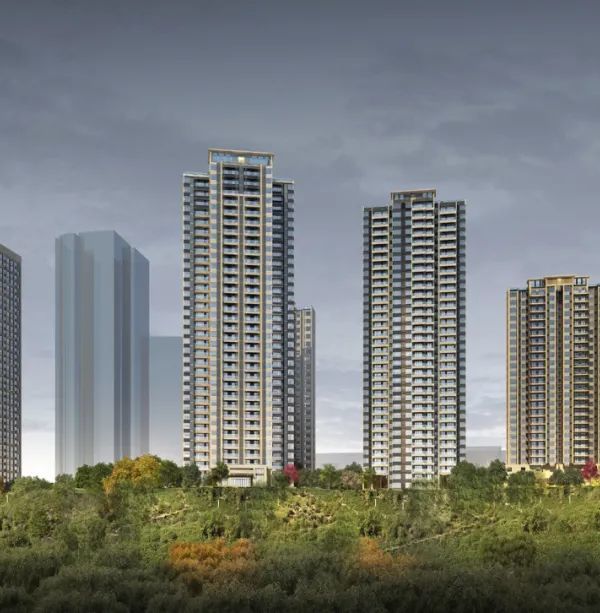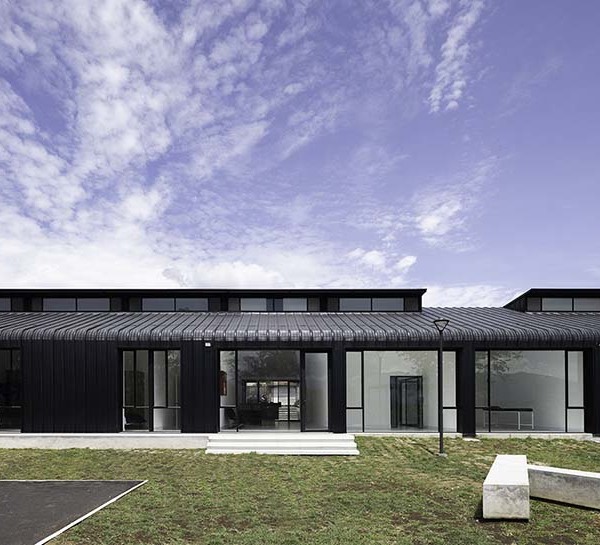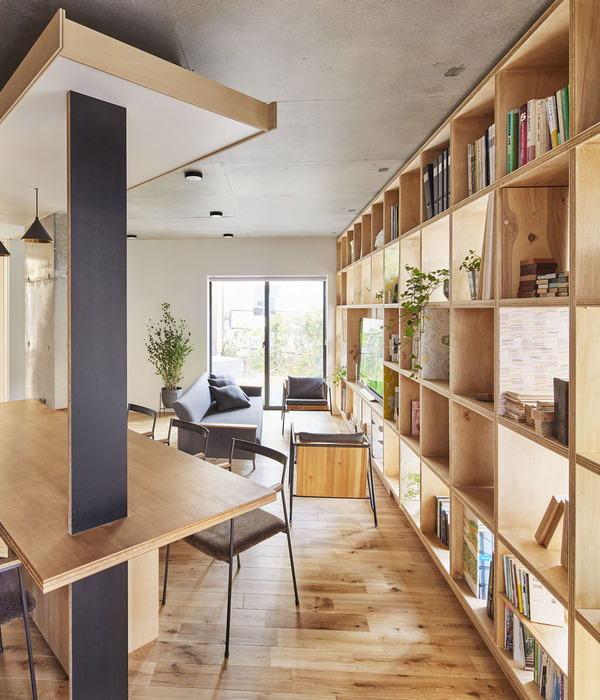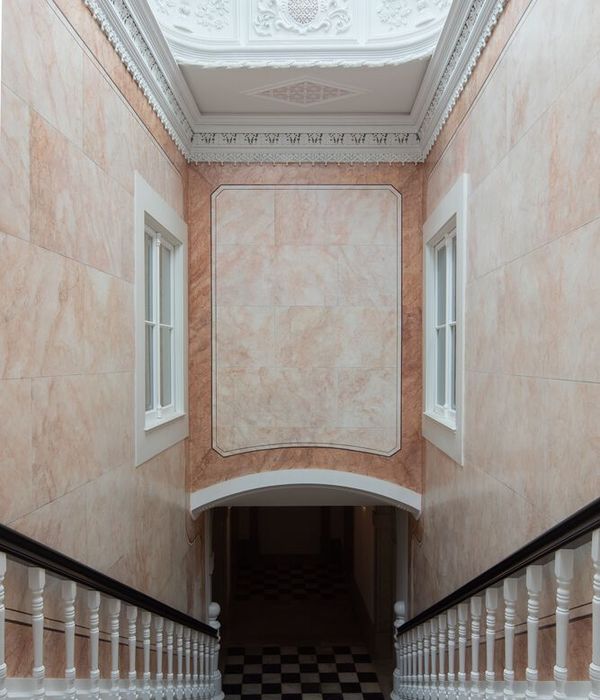© Lukas Pelech
(C)Lukas Pelech
架构师提供的文本描述。作为功能旗帜。
Text description provided by the architects. Façade as a functional banner.
将一个位于住宅区郊区的前车展室改造为我的DVA集团的一个场地,重点是办公室、学校和金属家具的生产,这是年轻的建筑公司CHYBIK Kristof Architect的另一个已完工的结构。
The transformation of a former car show room on the outskirts of a housing estate into a site of the MY DVA group, focusing on the production of office, school and metal furniture, represents another finished structure of the young architecture firm CHYBIK + KRISTOF Architects & Urban Designers from Brno. The single-storey building of a poor aesthetic quality turned into a building with a new, easily remembered façade composed of more than 900 black plastic seats. The façade is conceived abstractly, functioning also as a banner advert for the firm itself. After finishing a simple refurbishment of its interior, a new flexible showroom was created presenting the individual segments of the firm´s production in specific, thematically arranged settings.
Axonometry
Vinohrady是20世纪80年代上半叶在布尔诺建造的最古老的屋村之一。这个车展室本身建于20世纪90年代,是附近商业建筑的一部分,与四车道扎罗西卡公路接壤,然而,这条道路无论如何也不会加强这一地区的建设。以前的建筑状况在技术上和道德上都是过时的,从形式上看,它不符合社会的需要。鉴于这是以租金形式进行的临时投资,而且该公司已经在使用这些房地,拟议的解决办法必须是廉价和快速的。任务是:ˮ做它便宜,理想的免费,ˮ建筑师OndrejChybik和MichalKristof正在回忆。
Vinohrady is the name of one of the oldest housing estates built in Brno in the first half of the 1980s. The car show room itself was set up in the 1990s and is a part of a line of nearby commercial buildings, bordering with the four-lane Zarosicka road, which, however, do not enhance the area anyhow. The former state of the building was technically and morally outdated and from the formal point of view, it did not correspond with the needs of the society. Given the fact that it was a temporary investment in the form of a rent and the firm had already been using those premises, the proposed solution had to be cheap and fast. The task was: ˮDo it cheap, ideally for free,ˮ architects Ondrej Chybik and Michal Kristof are reminiscing.
© Lukas Pelech
(C)Lukas Pelech
My DVA集团隶属于国内办公、学校和金属家具的前沿供应商,重点是商业和教育内部的概念和实现,包括一些非典型元素。材料的选择,这应该是基于使用最低数额的钱,但具有最大的效果,以加强以前的建筑,因此,必须与公司的生产。因此,建筑是由一个均匀的产品,一个塑料黑色座椅约80 CZK/1件,没有任何更大的外部调整。它创造了一种抽象的纹理,它反映了在没有另一个横幅广告的情况下发生的事情。ˮ我们使用的是一种基本形式的内部椅子,称为维琴察,供应商定期交付。在这种情况下,然而,我们使用黑色颗粒在户外,因为它是抵抗不同的天气条件,特别是紫外线。ˮ建筑师正在描述。每个座位都是固定在一个结构由钢铁部分固定在正面。在机械损坏的情况下,每一件都有可能换一个新的,即使是表面清洁,也可以通过高压清洗机一年或两次轻松地进行一次或两次。
The MY DVA group belongs to the front domestic suppliers of office, school and metal furniture, focusing also on the concepts and realizations of commercial and educational interiors, including some atypical elements. The choice of material, which should have been based on the usage of a minimum amount of money, but with a maximum effect to enhance the former building, therefore, had to be connected with the firm´s production. Thus, the building is cladded by a homogenous product, a plastic black seat for about 80 CZK/1 piece, without any greater adjustments of the exterior. It creates an abstract texture which reflects what is going on inside without another banner advertising. ˮWhat we used is a basic form of an interior chair called Vicenza which the supplier delivers on a regular basis. In this case, however, we used black granulate for the outdoors because it is resistant to different weather conditions, especially UV light.ˮ the architects are describing. The individual seats are fixed on a structure made from steel sections fixed on the façade. In case of a mechanical damage, it is possible to change each piece for a new one, even the façade cleaning can be done easily once or twice a year by a high-pressure cleaner.
© Lukas Pelech
(C)Lukas Pelech
内部概念代表项目的第二层,由两个部分组成:一个陈列室和一个为雇主提供背景的办公室。大楼的内部被拆除了。展厅的展示空间是通过扩大布局中心的前入口大厅而形成的,并以聚碳酸酯隔墙为界。地板采用白板统一,天花板上仍然是以前的公平表面混凝土面板,所有新的线材都是暴露出来的。三个圆形画廊嵌入这个新创造的空间,代表三个不同的生产部门-学校家具,办公室家具和设计件。圆形裁剪用白色的纺织品窗帘标出,以达到整个空间的高度,既可以关闭也可以让其打开。裁剪的内部代表三种不同的环境,地板材料、照明手段和灯光本身的颜色都是为了与家具的自然环境相对应。空隙可以填补各种产品或艺术品,他们可以作为一个共同的房间,为员工或与客户的聚会。整个空间按照画廊的原则工作,可以根据实际需要轻松调整。
The concept of the interior represents the second level of the project and consists of two parts: a showroom and offices with a background for the employers. The inside of the building was demolished. A presentation space of the showroom was created by enlarging the former entrance hall at the centre of the layout and is demarcated by polycarbonate partitions. The floor is unified by means of white screed, on the ceiling remain former fair faced concrete panels and all the new wirings are exposed. Three circular galleries are embedded into this newly created space, representing three different segments of production – school furniture, office furniture and design pieces. The circular cutouts are demarcated by white textile curtains for the full height of the space, they can be closed or let open. Interiors of the cutouts represent three different settings where the flooring material, means of lighting and the colour of the light itself are aimed to correspond with a natural setting that the furniture is intended for. The interstices can be filled with various products or pieces of art, they can be used as a common room for the employees or for get-togethers with clients. The whole space works on the principle of a gallery which can be easily adjusted according to the actual needs.
雇员的办公室是在建筑周边保留下来的,他们被日光照亮,通风,并被灰色的地毯和白色的油漆统一起来。
Offices for the employees are preserved along the perimeter of the structure, they are illuminated by daylight, have a ventilation and are unified by a grey carpet and white paint.
© Lukas Pelech
(C)Lukas Pelech
Architects CHYBIK+KRISTOF
Location Brno-Vinohrady, Czech Republic
Category Adaptive Reuse
Design Team Ondrej Chybik, Michal Kristof, Victor Cojocaru, Martin Holy, Vojtech Kouril, Sarka Kubinova, Ondrej Mundl, Matej Strba
Area 550.0 m2
Project Year 2016
Manufacturers Loading...
{{item.text_origin}}

